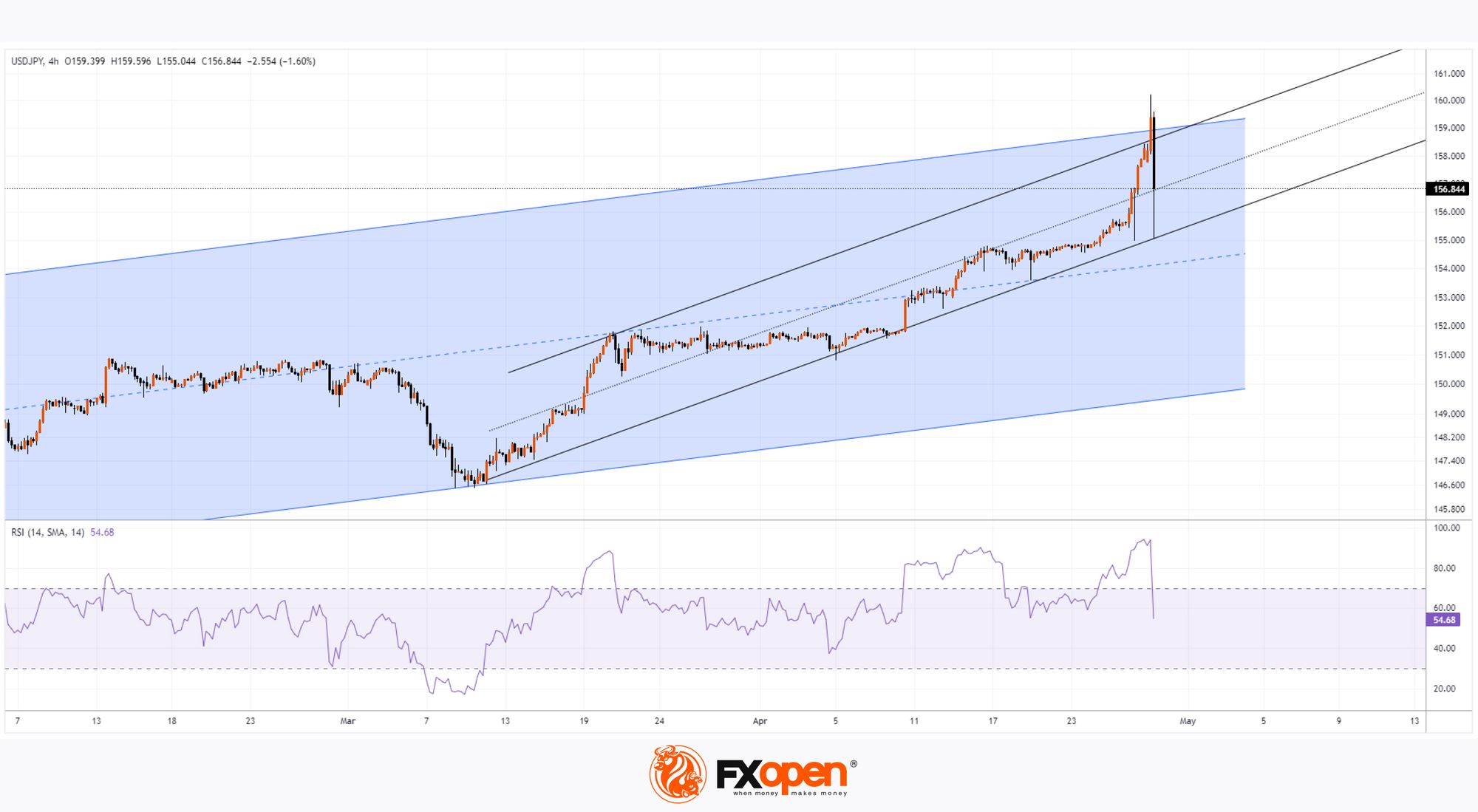FXOpen

Despite the fact that today is a holiday in Japan, the foreign exchange market is experiencing extreme volatility — wide candles are forming on the USD/JPY chart, and the rate briefly exceeded the psychological level of 160 yen per dollar, reaching a new high in 34 years.
The weakening of the yen in the first hours of trading occurred against the background of the fact that:
→ On Friday, the Bank of Japan decided to leave interest rates at the same level = 0.1%.
→ At the same time, market participants did not hear clear signals from the Bank of Japan that the weakening yen would be supported.
→ On Wednesday, May 1, the Fed will announce its decision on the interest rate. It is also expected to remain unchanged at 5.5%, highlighting the difference in monetary policy between Japan and the United States.
However, shortly after the yen surpassed the psychological level of 160.00, USD/JPY fell sharply to 155.50 and below — traders, according to Reuters, saw signs of intervention from Japanese financial authorities after a 13% increase since the beginning of the year.
Let us recall that Tokyo previously intervened in the foreign exchange market in September and October 2022, when the US dollar exchange rate was about 146.00 and 152.00 yen, respectively.

Technical analysis of the 4-hour USD/JPY chart shows that:
→ the price has exceeded the upper limit of the ascending channel (shown in blue);
→ the price has exceeded the upper limit of a steeper ascending channel, which originates in March (shown in black);
→ the RSI indicator exceeded the value = 93, indicating that the market was extremely overbought.
Having reached the lower black line, the USD/JPY rate bounced from it to the black median line — thus, a decrease of 2.5% took only 1 hour.
If official statements follow soon, they may confirm the assumption that the 160 yen per US dollar level is a tolerance limit that Tokyo cannot afford to allow to be breached. Such statements have the potential to change the balance of power in the market, cooling the ardor of the bulls.
It is possible that the peak reached this morning will be a peak that can hold for many months.
Trade over 50 forex markets 24 hours a day with FXOpen. Take advantage of low commissions, deep liquidity, and spreads from 0.0 pips. Open your FXOpen account now or learn more about trading forex with FXOpen.
This article represents the opinion of the Companies operating under the FXOpen brand only. It is not to be construed as an offer, solicitation, or recommendation with respect to products and services provided by the Companies operating under the FXOpen brand, nor is it to be considered financial advice.
Stay ahead of the market!
Subscribe now to our mailing list and receive the latest market news and insights delivered directly to your inbox.








